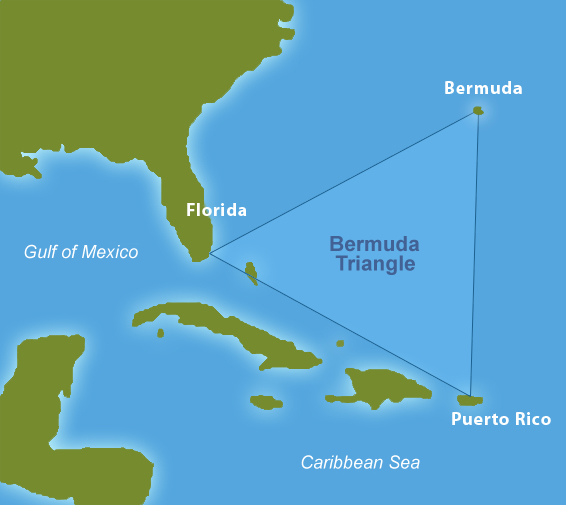The energy source is methane gas and there are no alien spaceships or suburbs of Atlantis here. The myth of the Bermuda Triangle, the mysterious disappearances and strange events, has generated much interest all over the world through the years. Charles Berlitz’s book on the subject, published in 1974, sold nearly 20 million copies in 30 languages. Ships, boats, and even aeroplanes are all said to have disappeared in this area and all the mystery has been attributed to extraterrestrials. But scientists now have an explanation for these phenomena and the cause is not extraterrestrial but chemical. It goes by the name of methane gas hydrate, which is methane (created by decomposing organic debris) that has been entombed in an ice crystalline. Conditions are ideal for the formation of this gas in areas of permafrost. Another area is the deep sea floor where the pressure and the temperature are right for the creation of this gas.
It was only in 1981 that a geochemist, Richard McIver, went public on a link between methane gas blowouts and the Bermuda Triangle myth. He stated that massive landslides often occur along the North American continental shelf, which lies to the north of the Bermuda Triangle. Such land slumps can occur over a large area bringing down huge boulders which rupture the layer of gas hydrate beneath the sea floor, freeing the gas that is trapped beneath the hydrate ‘cap’ and also liberating huge amounts of methane trapped within the hydrate itself. The moment a methane gas pocket ruptures a vast reservoir of gas suddenly surges from the seabed, rising up in a huge plume before erupting on the surface within seconds and without warning. A ship caught in such a blowout would be doomed; the water beneath it would suddenly become much less dense, sinking it in a matter of moments. The vessel would plunge into the depths, where it would be covered as sediment disturbed by the blow out settles back on the sea floor. In fact, planes too could fall prey to such a deadly fallout.
The US geological Survey has estimated that just two small areas off the coasts of North and South Carolina, which are a part of the Bermuda Triangle, contain about 70 times the quantity of gas consumed annually in USA. The sea bed and the areas of permafrost are therefore storehouses of a great energy source. It has been estimated that just 1% of gas hydrate is equivalent to half the present conventional gas reserves. But the bad news is that methane is a greenhouse gas and it is vulnerable to blowouts when drillings go wrong. It is only stable under narrow temperature and pressure conditions and would decay due to global warming. We will have to wait and see whether it gives us energy to burn or it burns us up instead!





